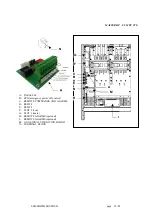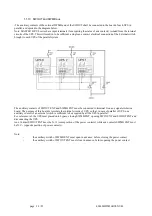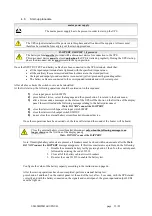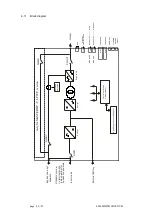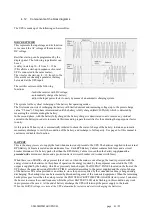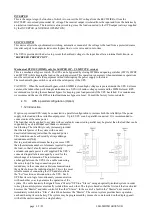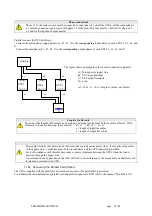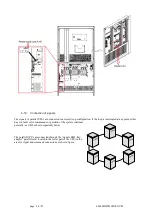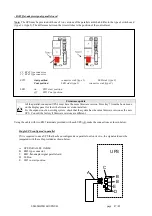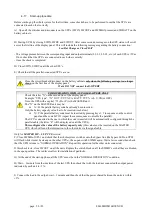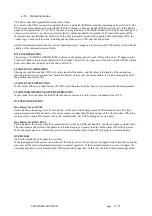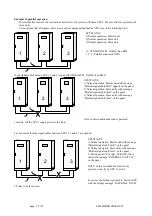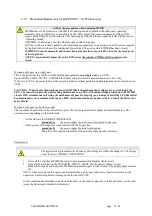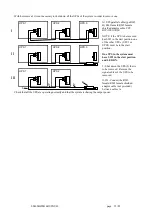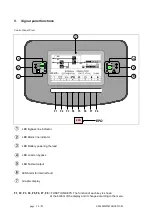
0MLMHTM16RUENUB page 41 / 85
4.12
Components of the block diagrams
The UPS is made up of the following sub-assemblies:
IGBT RECTIFIER
This represents the input stage and its function
is to convert the AC voltage of the mains into
DC voltage.
Rectifier start-up can be programmed by the
display panel. The following in particular can
be set:
A delay in start-up t0 – t1 from 0 ÷ 120s
(This allows a start-up in sequence of several
UPS’s connected to the same mains);
The time for the start-up, t1 – t2, from 0 to 30s
(this avoids overloading a generator that may
be located at the UPS input).
The rectifier carries out the following
functions:
-
feeds the inverter with DC voltage;
-
automatically charges the battery;
-
adjust the input power factor to unity by means of an automatic charging system.
The system for the cyclical recharging of the battery has operating modes.
The first mode consists of recharging the battery with limited current and increasing voltage (up to the preset charge
value “Vb max”). This phase is maintained until the battery is fully charged (Batt=100%Ah), which is detected by
measuring the current entering the battery.
In the second phase, with the battery fully charged, the battery charger is deactivated so as to remove any residual
current in the battery in order to increase its lifetime and to prepare the rectifier for the adjusting the input power factor
to unity.
At this point a 24 hour cycle is automatically initiated to check the state of charge of the battery, initiate an automatic
momentary discharge to verify the condition of the battery, and recharge to full capacity. See page 63 of this manual to
customize or disable this function.
BATTERY
This is the energy reserve to supply the load when mains is not present to the UPS. The batteries supplied in the external
RPS Battery Cabinet are sealed and maintenance free. Each RPS Battery Cabinet contains both fuses and a circuit
breaker disconnect. If a battery pack other than the RPS Battery Cabinet is used then the battery supply
must be
provided with
a disconnect device and a protection device (circuit breaker or disconnect with fuses).
When there is no MAINS voltage present (black out), or when the mains is out of range, the load is powered with the
energy stored in the batteries. In this phase of operation the energy required by the equipment connected to the UPS
output is supplied by the battery, which has previously been charged. The DISPLAY PANEL located on the front of the
UPS shows the expected residual BACKUP TIME, calculated according to the power supplied and the state of charge
of the batteries. The value provided is an estimate, since the power required by the connected load may change during
discharging. The backup time can be increased by disconnecting some of the connected equipment. When the remaining
backup time goes lower than the value preset as the END OF BACKUP TIME PRE-ALARM (factory-set at 5 minutes),
the buzzer increases the sound frequency while the yellow BATTERY LED starts flashing; in this condition any work
in progress must be saved. At the end of battery discharge the UPS will interrupt the power supply to the loads.
When the MAINS voltage is restored, the UPS automatically restarts and starts recharging the batteries.



